Michael Ward
at Gallery 825
With ruminations by
D. J. Waldie
October 18–November 14, 2008
Opening Reception October 18, 6:00-9:00 pm
825 N. La Cienega Blvd.
Los Angeles, CA 90069
Close window
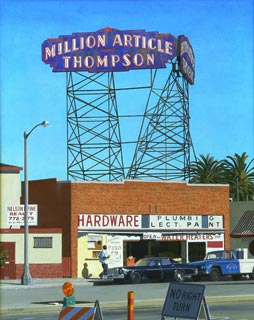
Vermont at 89th St., Los Angeles, CA.
I began taking slides about 1975. At the time, I was interested in Victorian architecture, and sought out the few scarce examples extant in Long Beach. Along the way I was distracted by what seemed like interesting photo subjects--old signs, old cars, bits of art deco architecture. This was a time when Long Beach was in decline, especially downtown, and answered that decline with the remedy of urban renewal, destroying in the process historic buildings like its art deco city hall complex including the Gas Company and the VA, demolishing apartment towers and waterfront hotels, and ultimately a vast swath of downtown to make way for a mall. I covered the city mostly on foot, which is the best way to make a thorough visual assessment of the territory. Since I was mainly interested in documenting structures, I was not overly concerned with lighting or composition. Thus many buildings appear in shadow. I took photos until about 1981, when I moved away from Long Beach.
During this period I began making paintings based on some of these images, and have continued to do so up to the present day.
One does not set out to record the mundane facts of one’s everyday existence, though that is precisely what has the most resonance in later life. We take snapshots of unique events--vacations, birthdays, weddings--but no one thinks to record the humdrum--watching TV, cooking dinner, mowing the lawn. In my wanderings of Long Beach (and other parts of Southern California), seeking out the rare Victorian, the about-to-be-demolished, the nostalgic, I inadvertently captured bits and pieces of the everyday. What is at the margins, what is extraneous is, 30 years on, often more interesting than the original subject.
In my wanderings, one “photo essay” idea presented itself, and I began taking photos of Spanish-style architectural elements, mainly white stucco and Spanish tiles (and palm trees).There are a great many examples in Long Beach, and I amassed an extensive archive, both of complete buildings and interesting details.
I now find the images organizing themselves into other thematic collections. One is Persistence, the uncanny survival, mostly by chance, of some intact bits of the past. The survivors are not always those that would be expected. It seems as if God does sometimes play dice. Another is Ruin, both actual and imminent. The latter is more easily perceived with the passage of time than it might have been when the photos were taken.
Other buckets that these images fall into: People Live Here (which is the title of one of my paintings). We can view with awe or disgust the sorts of places people lived in in Long Beach circa 1980, but we make our lives where we will, or can. What seems a rude slum now was a starting freehold then, and perhaps a site of younger, freer, less-encumbered days. Time Warp: Perhaps it was my predilection for taking pictures of old cars, but in any even many images taken in the period show scenes that could have been 10 or 15 years earlier. Thanks to Long Beach’s then-elderly population (and their unchanging taste in clothes), many scenes have this time-warp quality. What we think of as the Now is not a single moment, but a collection of elements, some current, most from earlier times. We carry our past around us like a cloud of electrons around an atom.
Beginning in the 1970s, I roamed across the Southern California landscape, taking photos of whatever seemed interesting at the time. Some of these images cried out to be painted, and I started painting them in 1980, first in gouache, then in acrylic. In the process I have learned that the act of painting allows me to continue the journey, reexamining the places I have been, and the life I have lived, in ever greater detail.
Though it was never my intention to depict nostalgic scenes, many of the images I have painted have disappeared or been radically altered in the ever-changing landscape that is Southern California. Thus nostalgia is thrust upon the works. Still I persist in capturing what Alan Watts called the mystery of the ordinary; the workaday world we live in without seeing until we are forced to focus upon it, as in a painting.
My sometime companion on these journeys, author D. J. Waldie, has contributed some "ruminations" to accompany the images. These are not explanations or captions, but rather meditations on the world we have built for ourselves.
The paintings in this show are the most recent steps on that continuing journey.
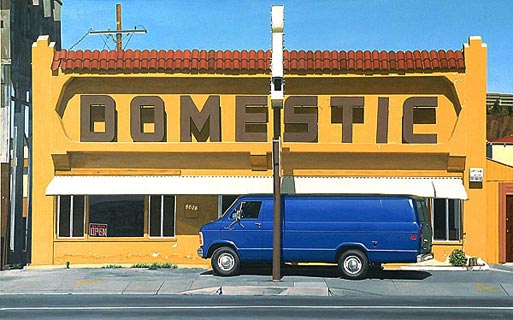
Commercial building, Pacific Coast Highway, Long Beach;
replaced by condos.
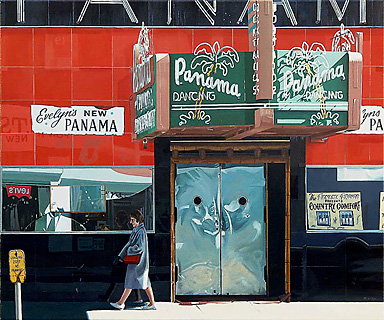
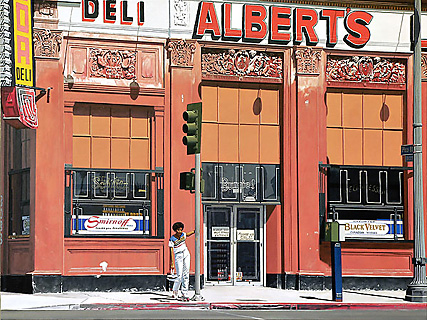
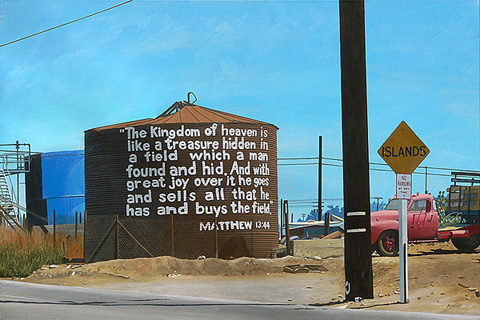
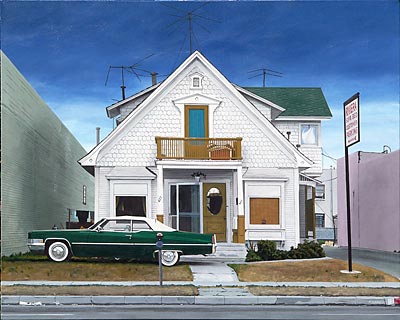
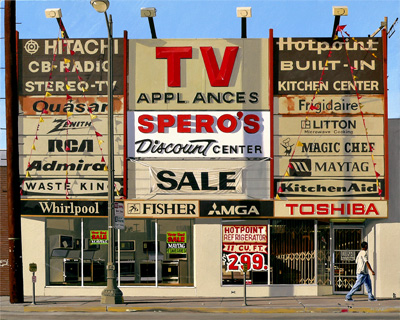
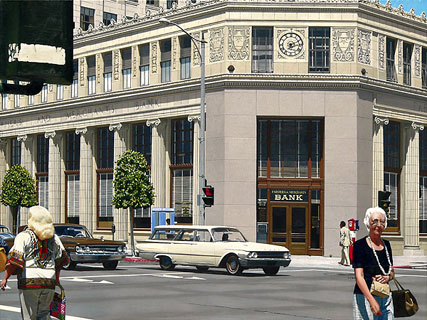
Pine Avenue at Ocean, Long Beach, CA; demolished.
Pico at Western, Los Angeles, CA.
Signal Hill, CA, circa 1975; demolished.
A house in Long Beach, CA, since demolished.
Artesia Blvd. in Torrance, CA, demolished.
Third and Pine, Long Beach, CA, circa 1975. (Or is it 1963?)
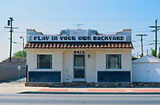
Fishermen's Hardware
Waiting for the Parade
Higgins Automotive
Used Cars
People Live Here
Long Beach #1
Long Beach #2
R Blanco Tailor
Spanish Kitchen
Tire Sale
Liquor Arrow #2
Valentines
Park Free for Penneys
In Escrow
Interrupted Knitting
Wonder Shops
Pink Apartments
Red Caddy Apts.